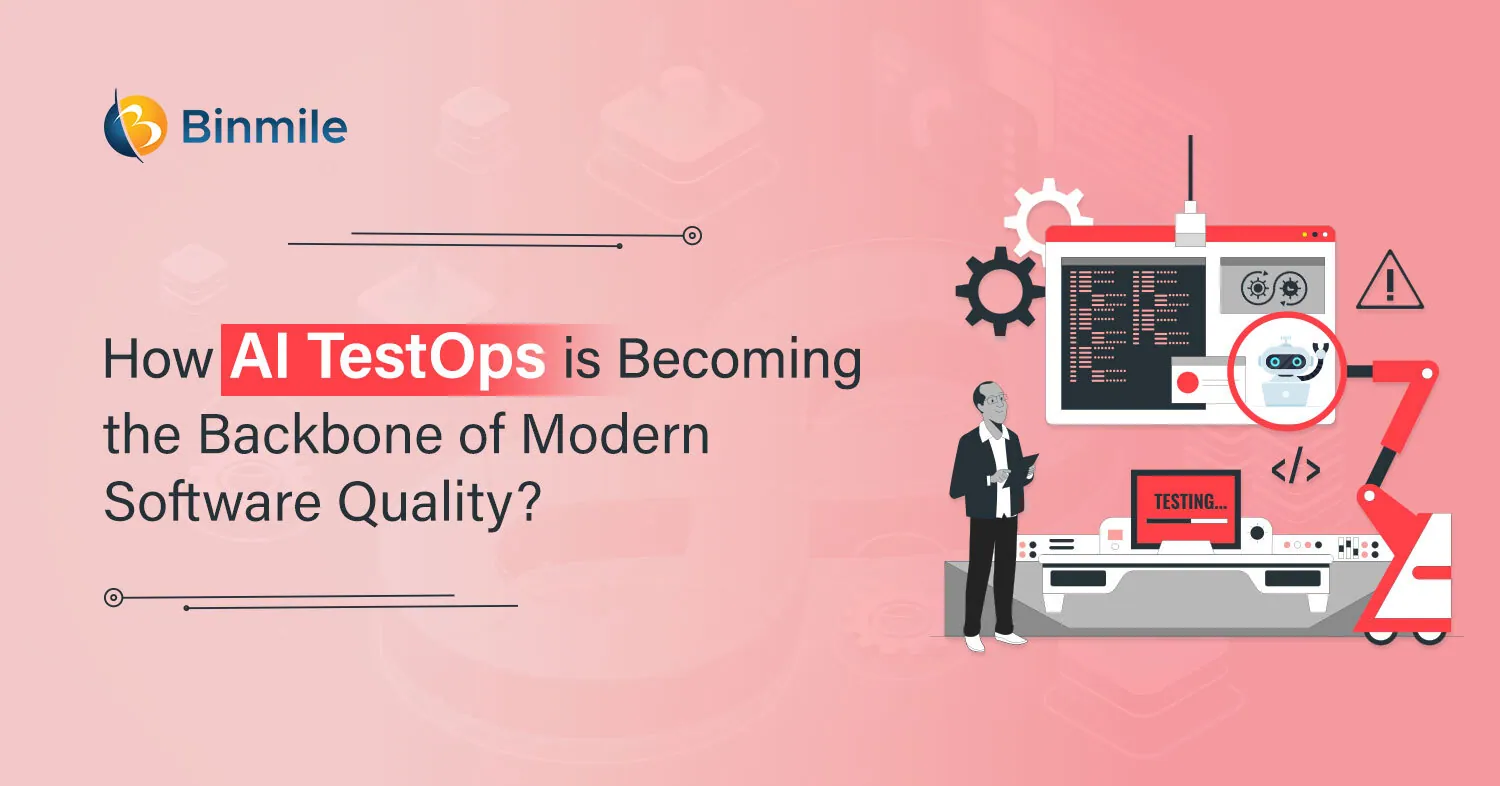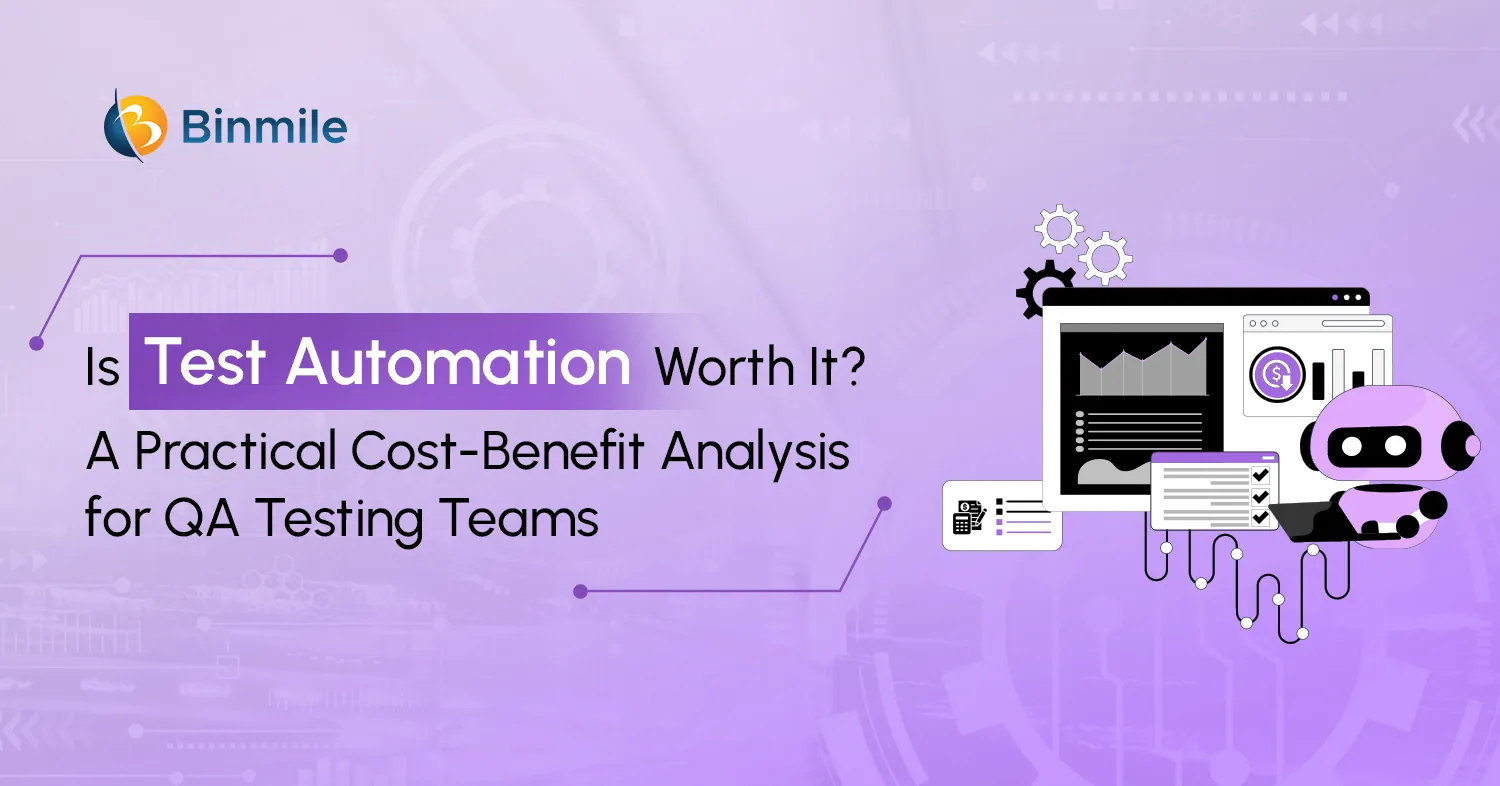The propagation of technologies and information availability has changed the way software products are created and delivered. Today, quality improvement, defect elimination, and real-time output are the buzzwords in software development and the process of software development life cycle (SDLC). Without a doubt, the software development industry is continuously evolving with developmental complexity in the workflow across various platforms. Moreover, customer satisfaction and changing customer behavior should match the need for cut-throat market competition. That is why quality matters the most at all stages of SDLC. Today, Quality Assurance (QA) experts need to play Quality Engineering (QE) experts to make the most out of existing resources and upcoming technologies. Read the content below and find out why there is a big gaga over quality engineering’s shifting focus over quality assurance. Also, check out how you can move from QA to QE in a perfect manner.
What are Quality Engineering and Quality Assurance?
Quality engineering covers everyone involved in software product development, ensuring stringent quality checks for solving problems in real-time. It means quality is everybody’s concern. From product quality to process analysis, QE entertains everything. It is directly associated with the concept of test-driven development (TDD) methodology related to writing codes and DevOps related to bringing software development and IT operations together to remove silos.
The concept of agile or iterative development has completely changed the scenario of the SDLC. This approach focuses on the bottlenecks that were prevalent with the QA process. QE redefines the role of quality analysis for efficient output. The introduction of the following aspects in software development processes has paved the way for a significant change. These include:
- Customer-centric innovation
- Digital transformations
- Agile and DevOps approach
- Internet of Things (IoT)
- Cloud
QA engineers faced many challenges like complicated testing procedures, code writing, functionality after design, and upstream and downstream dependencies. Moving to modern technologies is vital for increasing quality as per changing levels of customer acceptance and satisfaction. That is why the integration of quality in the whole SDLC process is the need of the hour.
Trends Toward Quality Engineering Over Quality Assurance
Here we go through the findings of a report entitled “Quality Engineering in the New” by multinational professional services company Accenture. This report offers a few details of relevant trends indicating a big change toward QE over QA. According to Accenture, “traditional approaches to software testing have been significantly disrupted with the advent of DevOps and intelligent automation, as well as the proliferation of digital applications.”
Accenture also says, “Testing has evolved through quality engineering that begins upfront as part of the initial application planning and establishes a continuous feedback loop to anticipate and act on the unknown.” The reports suggest that a time for us to unlearn most of what we know has arrived.
Nitin Mehra, an Engineering Director at Indeed, admits, “The introduction of concepts like agile development flipped the model [quality assurance] on its head in terms of software development timelines and its delivery. This has forced teams to adapt to a process which encouraged smaller multiple releases as opposed to longer fewer ones, significantly impacting the way in which testing is being done.”
Both statements clarify that the advent of Artificial intelligence (AI) and automation technologies are driving the shift from QA towards QE. So, the introduction of AI and automation technologies will help testing teams:
- Identifying problems faster or before they occur
- Correcting problems easily
Know the Difference: Artificial Intelligence Vs Intelligent Automation
Actions for Moving from Quality Assurance to Quality Engineering
Making a vital shift in any process is not an easy task. All you have to do is to get ready for the next change. Prepare a proper strategy that brings your team, tools, and processes under an umbrella. Take help from leading software development quality engineering and get the benefits of digital transformation solutions. Check out the following six factors to transform your journey from QA to an efficient QE approach.
Workforce Transformation
- Change the team mindset
- Update team skills and tools
- Transform the culture as a whole
These steps will help you move from just testing as an activity to testing as a service.
Upstream testing
- Don’t test the product once it has been developed
- Use an agile approach to start testing right from the beginning of SDLC
- Incorporate feedback and continuous integration during SDLC
Automation Framework
- Have automation on routine testing processes
- Expand the role of automation in testing with tools
- Try Selenium, LambdaTest, QTP, TOSCA, QFTest, cognitive AI, and ML
Enterprise CI/CD
- Employ a Continuous Integration (CI) and Continuous Deployment (CD) pipeline
- Save effort and time invested in manual, error-prone deployment work
- Upstream testing level to drive quality in SLDC
Crowdsourcing
- Crowdsource work to the public, private, and certified communities
- Expand your spectrum of digital services
- Accelerate design, coding, testing, and data science
- Get access to the best ideas that fit your exact needs
Outcome-based Model
- Adopt an outcome-based model for efficiency improvement and cost reduction
- Use measurable performance metrics
- Align QE process with the outcome-oriented model
- Pay for outcomes instead of individuals
Read Further: Performance Engineering over Performance Testing
Summing Up
Software development QE targets many goals like testing issue identification, real-time problem solutions, taking corrective actions, oversight and control of processes, determining metrics and standards, data analysis and collection, brainstorming solutions, and suitable test development. Employing these actions to move from quality assurance to total quality engineering brings transparency and a win-win solution for business enterprises. Ultimately, these actions help you increase rewards and decrease the risks involved in an SLDC.
For better output, software and app testing enthusiasts can get assistance from software testing experts who have mastery over quality engineering practices.
Frequently Asked Questions
Quality Engineering Transformation is the shift from traditional software testing to a holistic, automation-driven approach that integrates quality at every stage of the development lifecycle. It focuses on continuous testing, DevOps integration, AI-driven test automation, and proactive defect prevention to enhance software reliability, speed, and efficiency. This transformation ensures faster delivery, improved user experience, and higher business value by embedding quality into development from the start.
Quality Engineering Transformation improves software quality by integrating automation, AI-driven testing, and continuous monitoring throughout the development lifecycle. It ensures early defect detection, faster feedback loops, and seamless DevOps integration, reducing errors and enhancing performance. By embedding quality at every stage, it boosts reliability, security, and user experience while accelerating software delivery and reducing maintenance costs.
Software Quality Transformation is the process of improving software quality by adopting modern testing methodologies, automation, AI-driven testing, and DevOps integration. It focuses on shifting from traditional testing to a continuous quality assurance approach, ensuring faster releases, early defect detection, and improved performance. This transformation enhances reliability, security, and user experience while reducing development costs and time-to-market.









